The Best Photos and Videos of the 2024 Solar Eclipse
Well, the total solar eclipse was once again completely awesome. I didn’t have to go chasing all over tarnation this time, the telescope worked out amazingly well, and I got to share it with a bunch of first-timers, both in-person and via text. I’m going to share some thoughts, photos, and videos from others around the internet in an even bloggier fashion than usual. Here we go.
My pal Noah Kalina got one of my favorite shots of the day (see also + prints are available):
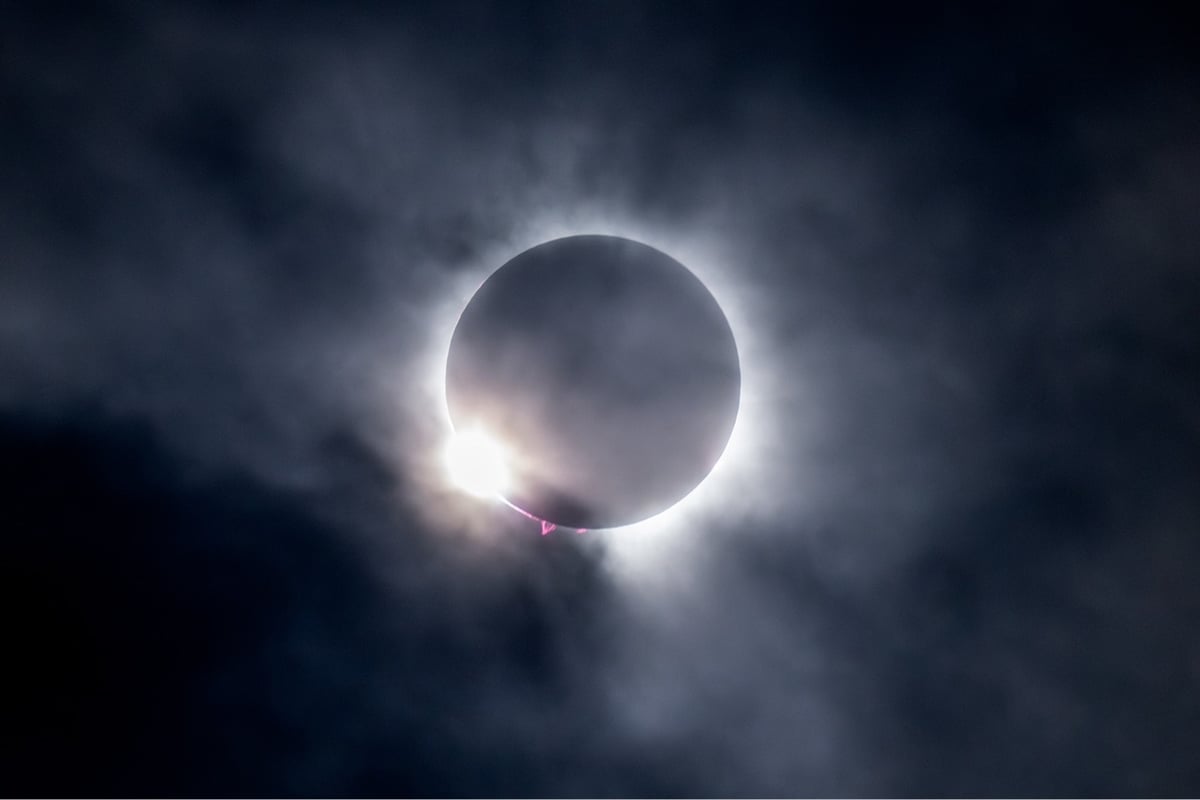
Gobsmacking shot from Rami Ammoun…it’s a blend of multiple exposures so you can see the sun and moon at the same time. Love this shot.
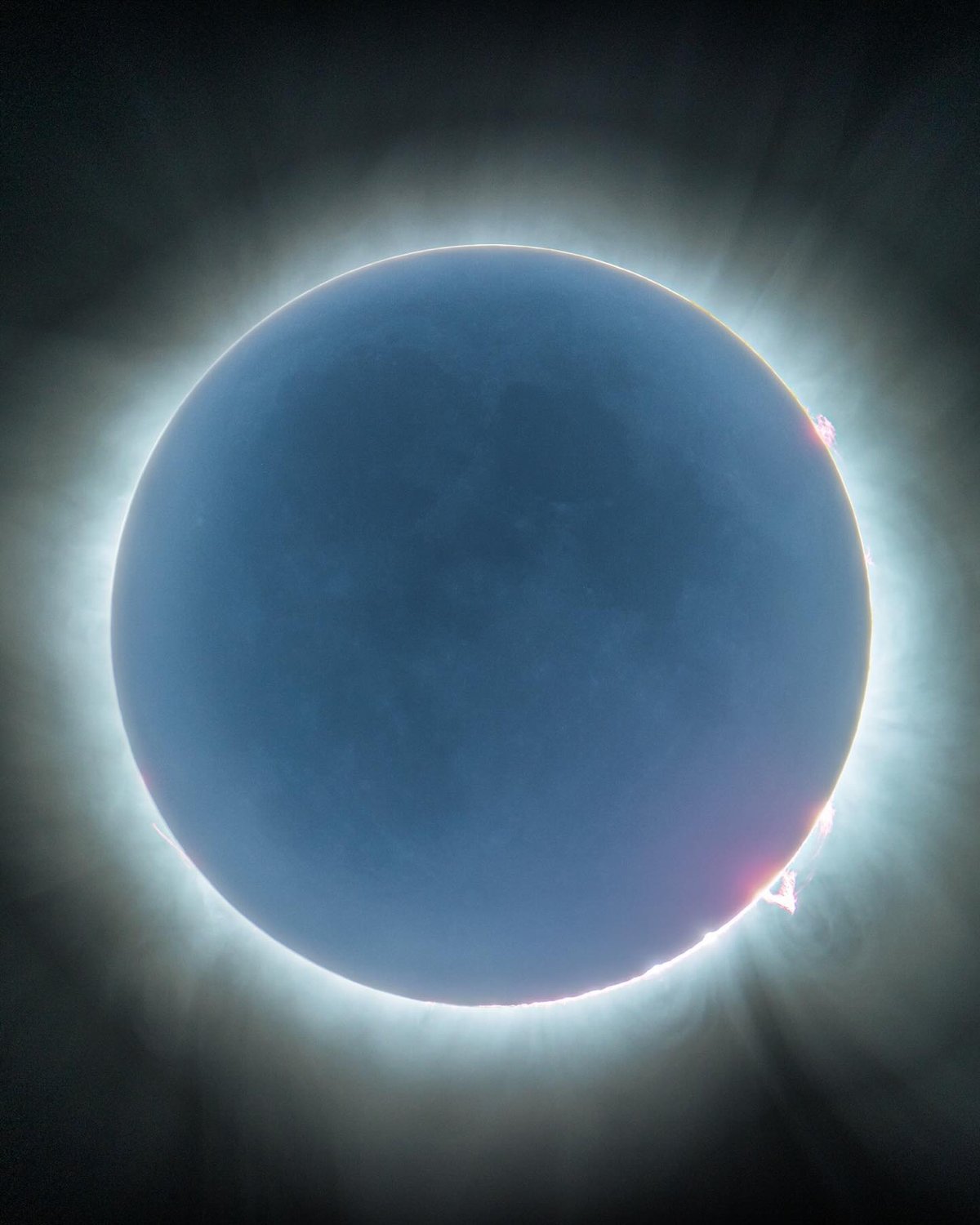
And another stunner from Andrew McCarthy:
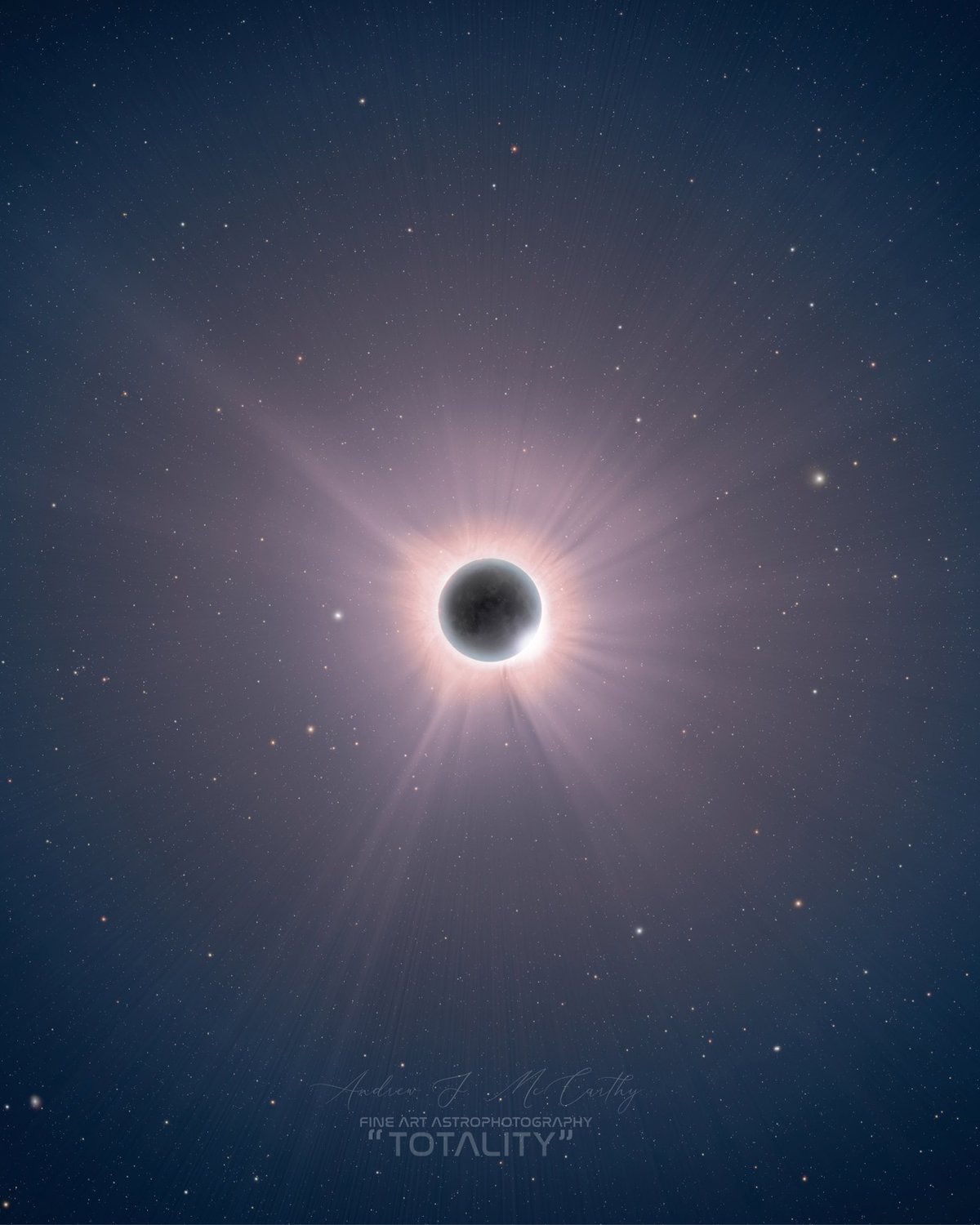
Ryan Cox got some great shots of the solar prominences during totality.

Quick solar prominence explainer interlude: if you had a clear look at totality, you may have noticed some orange bits poking out around the moon. NASA: What is a solar prominence?
A solar prominence (also known as a filament when viewed against the solar disk) is a large, bright feature extending outward from the Sun’s surface. Prominences are anchored to the Sun’s surface in the photosphere, and extend outwards into the Sun’s hot outer atmosphere, called the corona. A prominence forms over timescales of about a day, and stable prominences may persist in the corona for several months, looping hundreds of thousands of miles into space. Scientists are still researching how and why prominences are formed.
The red-glowing looped material is plasma, a hot gas comprised of electrically charged hydrogen and helium. The prominence plasma flows along a tangled and twisted structure of magnetic fields generated by the sun’s internal dynamo. An erupting prominence occurs when such a structure becomes unstable and bursts outward, releasing the plasma.
A timelapse video of totality from Scientific American:
Thomas Fuchs caught some sunspots through his telescope during the partial eclipse. (We saw these through our ‘scope as well.)
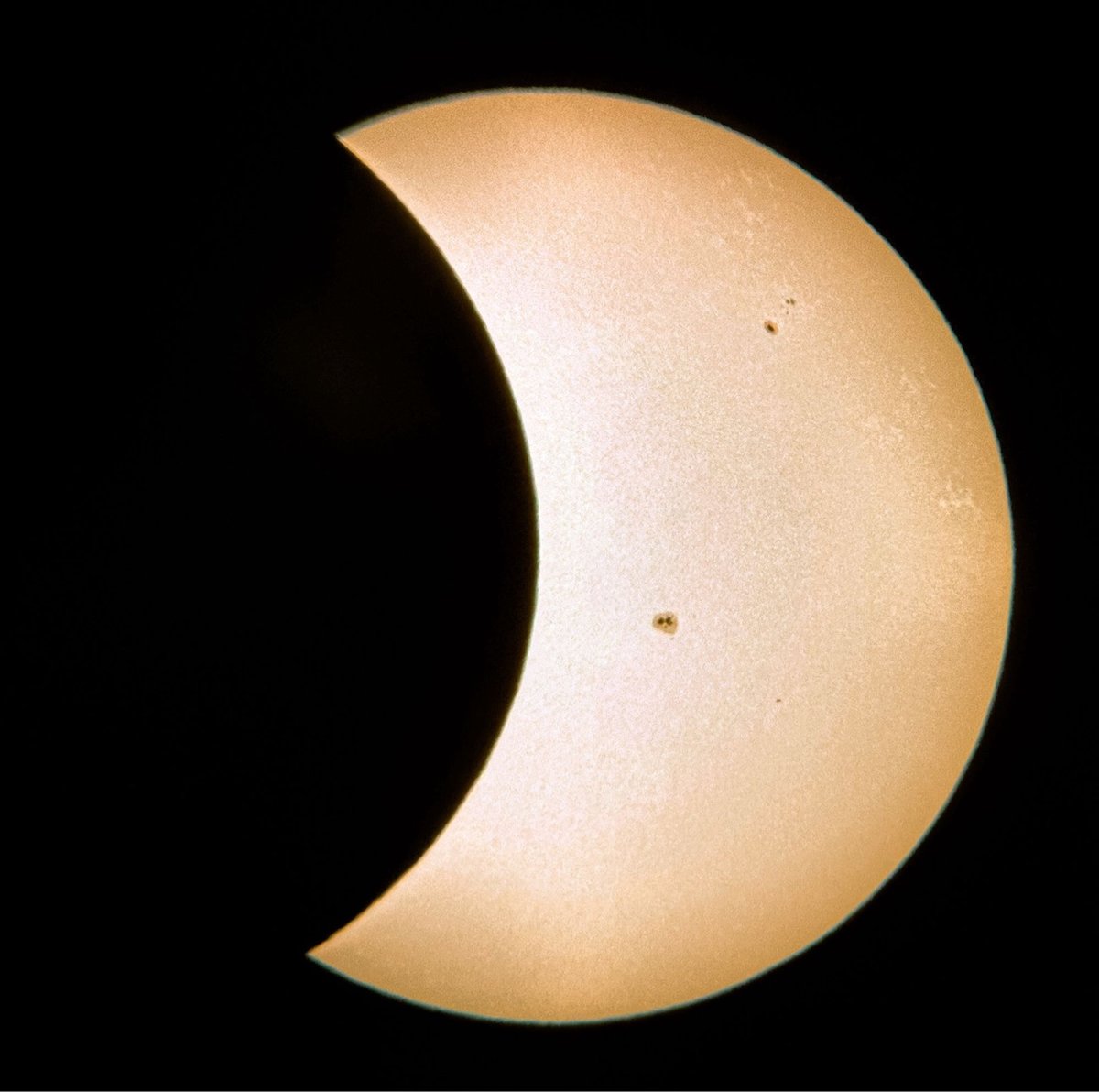
Quick sunspot explainer interlude. NASA: What exactly is a sunspot?
A sunspot is simply a region on the surface of the sun-called the photosphere-that is temporarily cool and dark compared to surrounding regions. Solar measurements reveal that the average surface temperature of the sun is 6000° Celsius and that sunspots are about 1500° Celsius cooler than the area surrounding them (still very hot), and can last anywhere from a few hours to a few months. Sunspots expand and contract as they move across the surface of the sun and can be as large as 80,000 km in diameter.
Sunspots are magnetic regions on the sun with magnetic field strengths thousands of times stronger than the Earth’s magnetic field, and often appear in pairs that are aligned in an east-west direction. One set will have a positive or north magnetic field while the other set will have a negative or south magnetic field. The field is strongest in the darker parts of the sunspots — called the umbra. The field is weaker and more horizontal in the lighter part-the penumbra. Overall, sunspots have a magnetic field that is about 1000 times stronger than the surrounding photosphere.
This Instagram account has a lovingly assembled collection of solar eclipse stamps from around the world (Aruba, Bhutan, Chile, Romania, Kenya, and even North Korea).
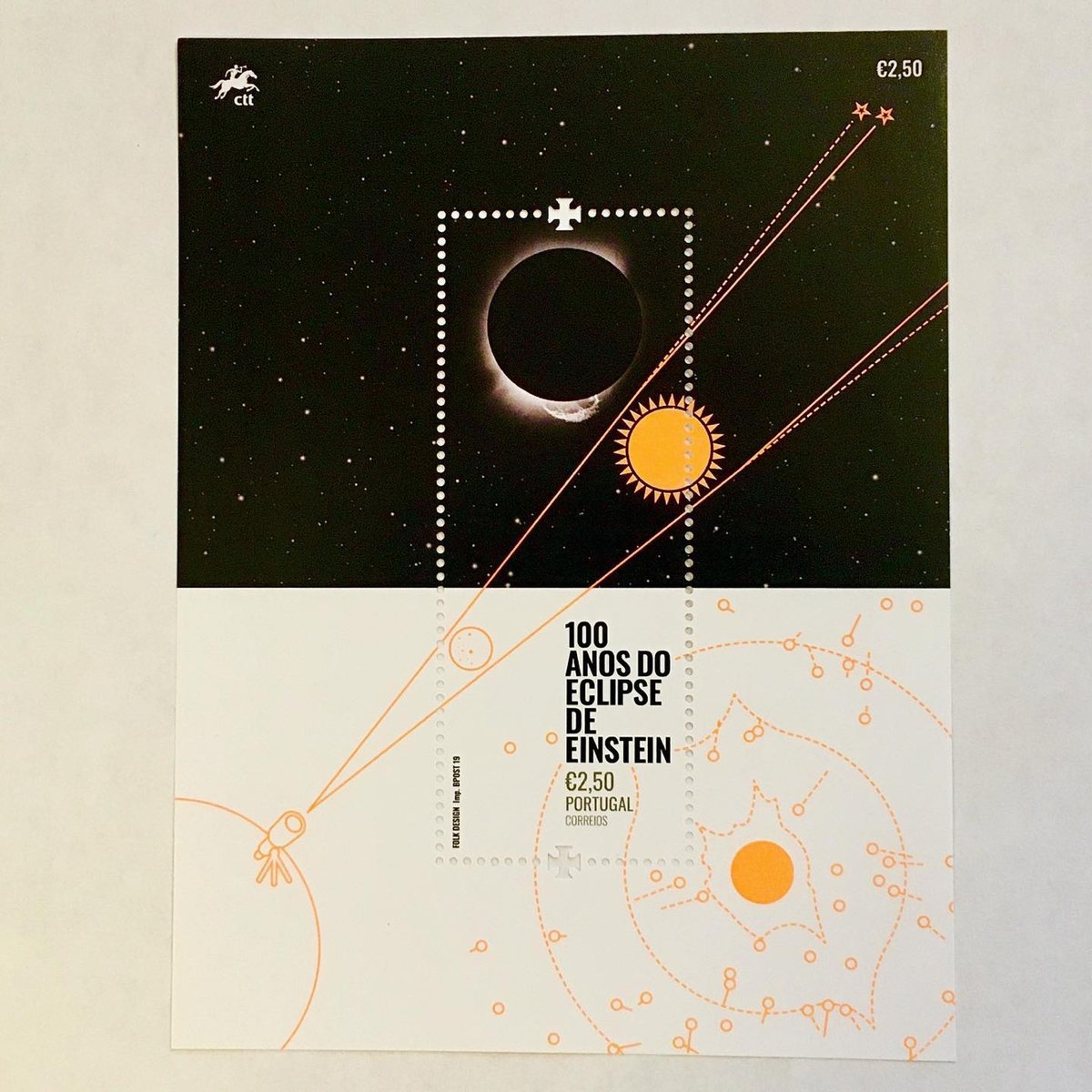
A NY Times timelapse: See the Total Solar Eclipse’s Shadow From Space (assembled from NASA and NOAA satellite imagery).
Great solar prominences on this shot from Notorious RBMK. Wow:
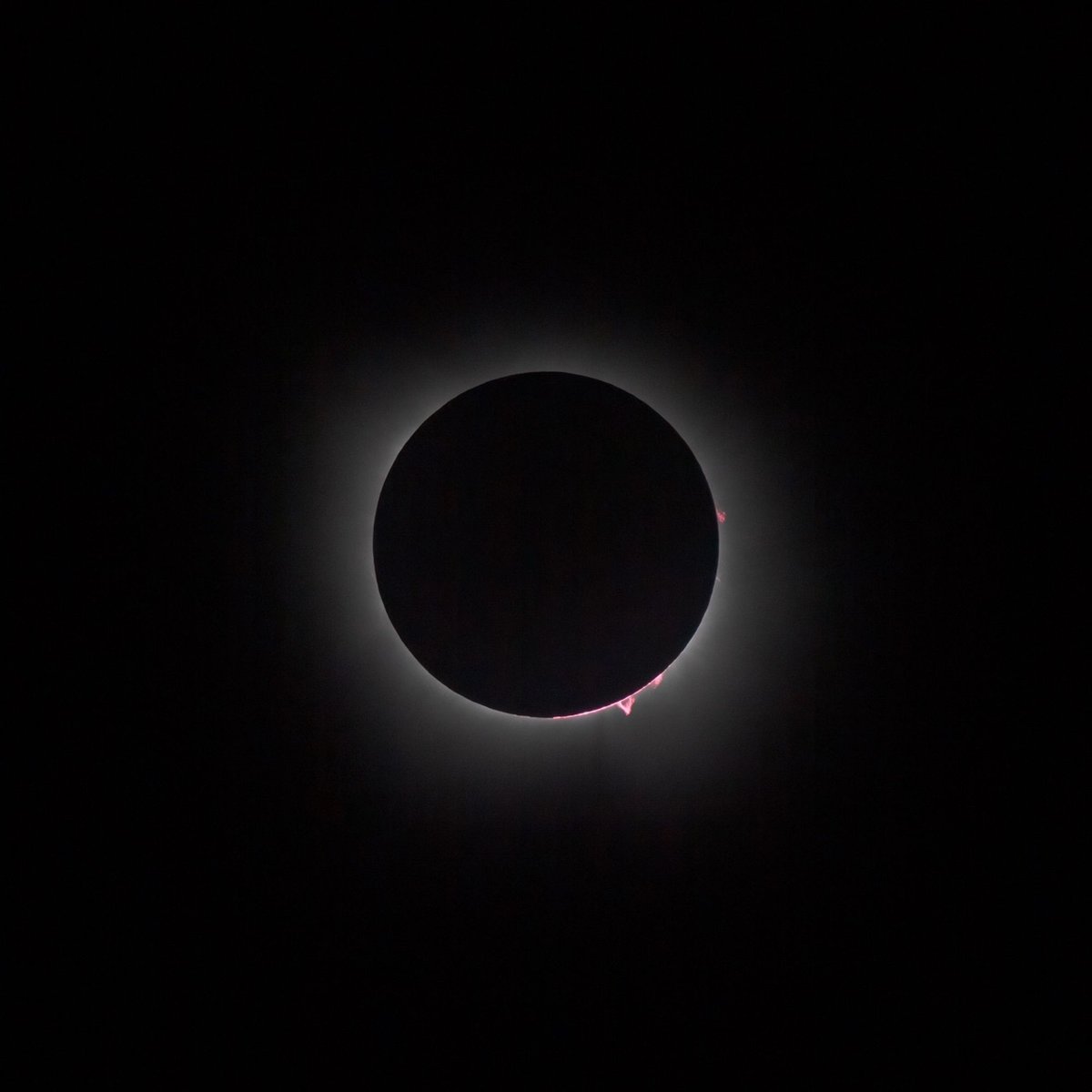
A timelapse video from Ariel Waldman of totality in Mazatlán. You really get a sense of the eclipse as a passing shadow from this.
Incredible “tiny planet” panorama timelapse by Matt Biddulph. Here’s a still frame during totality:
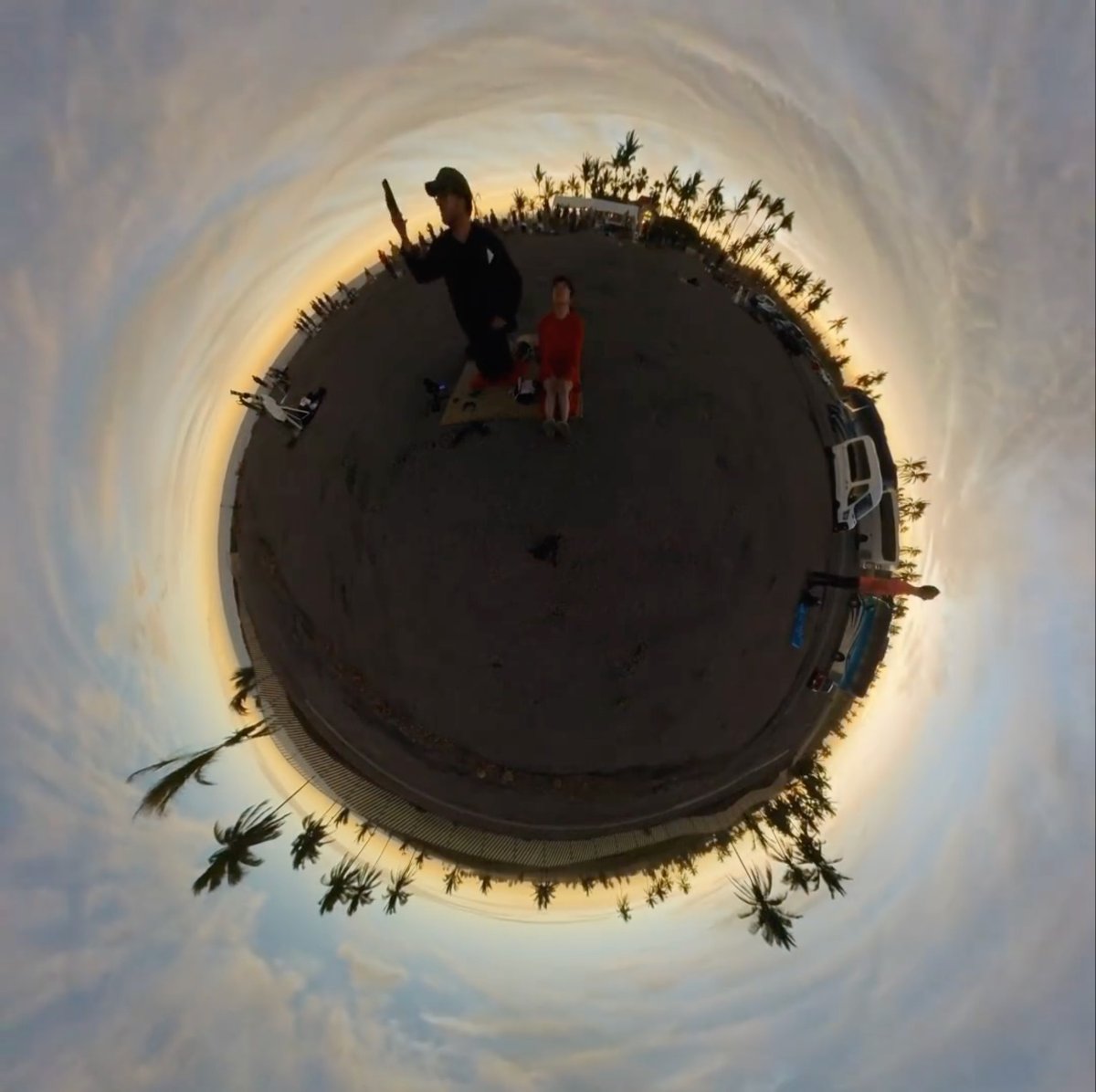
The 8 types of eclipse photo from XKCD.
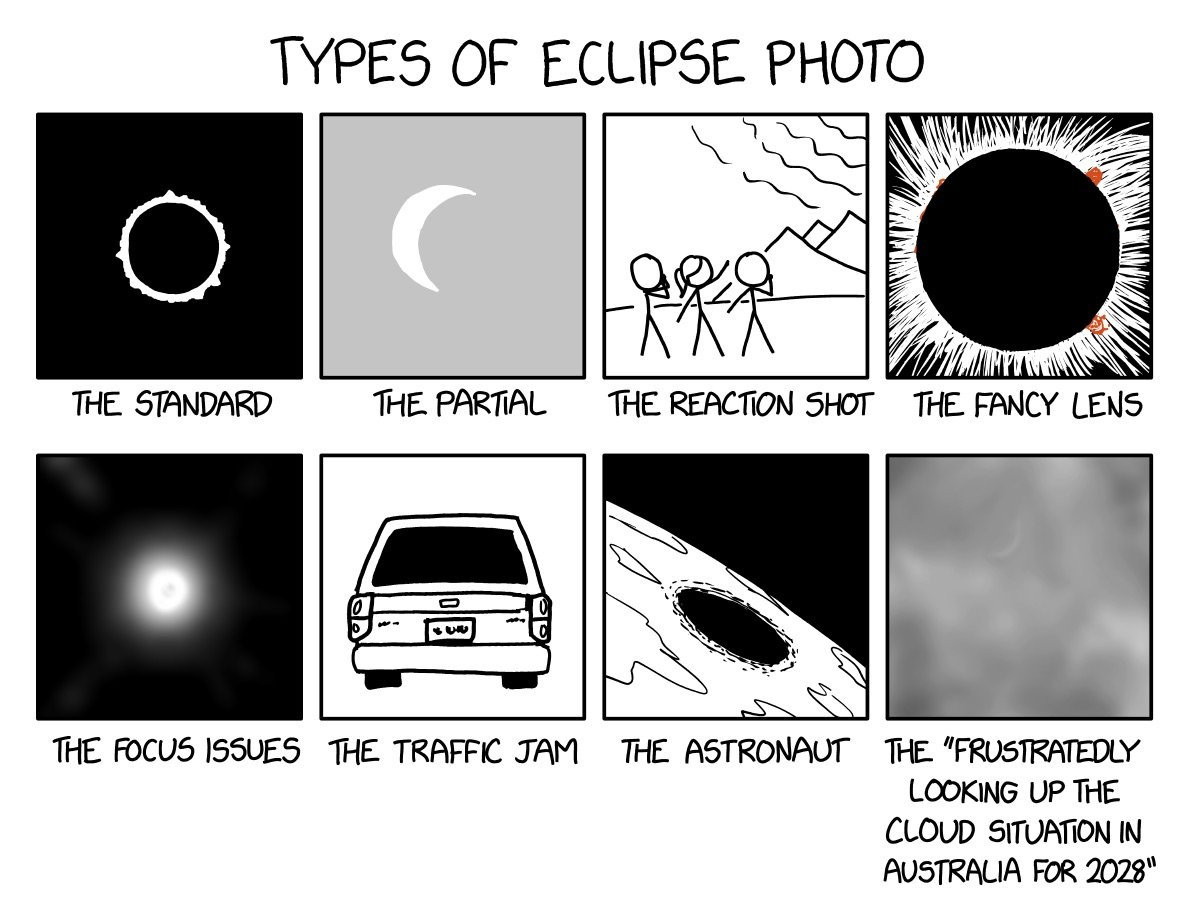
The view of the eclipse from the International Space Station.
More photos from The Dammich, fotoelliott, max GORDON, good thread of photos, and photo round-ups from PetaPixel, New Scientist, BBC Science Focus, Mashable, Associated Press, and Wired.
Video from Nate Luebbe of the moment of totality, with Baily’s beads and solar prominences.
This is a fake. Super super cool looking, but a fake. (Update: not quite a fake, just a really badly enhanced version of this composite HDR photo.) And I’m not sure I entirely trust the veracity of the trending search results for “why do my eyes hurt” but here it is anyway.
Earth Will Have Its Last Total Solar Eclipse in About 600 Million Years:
Total solar eclipses occur because the moon and the sun have the same apparent size in Earth’s sky — the sun is about 400 times wider than the moon, but the moon is about 400 times closer.
But the moon is slowly moving away from Earth by about 1-1/2 inches (4 centimeters) per year, according to the NASA statement. As a result, total solar eclipses will cease to exist in the very distant future, because the apparent size of the moon in Earth’s sky will be too small to cover the sun completely.
“Over time, the number and frequency of total solar eclipses will decrease,” Vondrak said in the statement. “About 600 million years from now, Earth will experience the beauty and drama of a total solar eclipse for the last time.”
If you want to get a headstart on trip planning, the next eclipse is going to be in Greenland, Iceland, and Spain on August 12, 2026. Cloud cover looks most favorable in Spain.
Ok, that’s all for now. Depending on what else I come across, I might update this post periodically throughout the day. I know some of you who were lucky enough to see the total eclipse shared your experiences in the comments of yesterday’s post but feel free to do so here as well.





Comments 21
thread
latest
popular
Having experienced totality in 2017, and then the 91% coverage of NYC yesterday I totally agree that partial vs total is not at all the same thing. Partial is oh a fun moment in the middle of the day when it gets a little creepily cloudy but totality is like the whole world shifted around you for a bit and you don't know where you are or what's happening.
Can you see the solar prominences by eye, or only through a telescope?
You could see them with the naked eye...tiny little orange bumps sticking out around the moon. But they were more visible through binoculars or a telescope.
I should have gotten out the binoculars- my 13 year old saw the red dots and it turns out we guessed right about what they were, but we couldn't see the shape at all until we started seeing the better photos others were posting.
We made the trip up to Mad River Glen for some truly remarkable spring skiing, followed by this incredible experience. An indelible lifelong memory and absolutely worth the traffic getting back down to NYC.
Made the trip to Indy with the family for totality and everything I read said not to bother with trying to take good photos unless you are a pro, so I focused on enjoying the moment with them instead. And we certainly did. But I did take a quick point and shoot and am happy to have a decent memento.
I appreciate your evangelical efforts tipping me over the edge to making the trip. It was the coolest thing I've ever seen.
We watched from Wake Robin in Shelburne, along with my husband’s 100-year-old grandmother! Watching the shadow approach through the Adirondacks and across Lake Champlain was breathtaking.
A few more images from around the web:
A drone video from Vermont that shows the marked difference between a 99% partial eclipse and a total eclipse. (via Matthew Battles in the comments)
Totality over the Waffle House. (via @DrollTide)
From 2017, a spectacular composite photo of totality by Sebastian Voltmer.
Mark Johnston took this collection of photos with the aid of two telescopes.
We were clouded out the end, but it was still really cool when the darkness came. My toddler’s reaction was wonderful
Jason, I have you to thank for motivating me to deal with the hassle of driving 6 hours (in both directions… in one day) to Maine to see this. I remember when you gave the 2017 eclipse an A+++++++++ (or whatever) and being like “…. wow… OK, I’m going to make one happen someday.” The most spectacular thing I’ve ever experienced, I think. I heard myself SCREAMING when the totality happened.
I went to Oregon in 2017 to visit a friend and watch the total solar eclipse in part due to your excitement leading up to it.
My family and I flew out to Cleveland this time. I like the way this video and picture turned out: https://photos.app.goo.gl/esTFouHVNTJAJn8C7 I didn’t bring my usual kit because I wanted to enjoy it with my eyes but couldn’t help myself with the phone. I had to pull down the exposure when I pointed up at the occluded sun.
We headed out on a lake in rural Texas— yay for friends' parents who own boats and let you sleep on their air mattresses! Clouds kept the lake empty, but magically cleared up, even adding to the wonder and suspense of it all. I certainly felt so small and in the moment— I knew I'd get nothing Instagram-worthy, so I kept my phone tucked away. My 12-year-old was insistent that this was no big deal but quickly became entranced and quite literally squealed with delight when darkness fell and we felt a noticeable breeze moving around us. When I asked her how she felt about it later, she said, "It's weird to know the world is working how it is supposed to— the eclipse wasn't something breaking, but it was reminding us of how the sun is shining every day." I ran to write her observation down in my journal. It wasn't a poem, but it was so poetic to hear my too-cool kiddo acknowledge our sweet smallness in this vast expanse.
Another eclipse photo from Max Baron. And this one is cheating a little bit because it's from the annular eclipse in 2023, but what I like about Brian Fulda's partial eclipse photo is that if you look closely at the "tips" of the sun, you can really see the moon blocking out the "glow" around the disk of the sun. So cool.
Noah Kalina is selling prints of his eclipse photo above.
And I love reading everyone's stories here! Thanks for sharing.
My wife and I took our moms with us to southern Illinois, and ended up with a perfect day. A sculpture garden in Mt. Vernon had set up a watch party, so we had lots of lawn, snacks, and enough people around to make it fun without being crowded. We're already saving up to travel to one of the next eclipses.
I did a little more photo prep & practice this time, and learned a lot, but nothing like some of the spectacular pro photos around.
https://www.flickr.com/photos/42462159@N00/albums/72177720316137194/
Catching up after getting back into town. I drove from St. Paul to Champagne to a state park near Sumner, IL. I keep looking for images and descriptions that encapsulate how I felt to no avail. Pretty awesome to experience something this can't be captured. Loved seeing these nonetheless.
If you're not sick of these kinda things yet, I wrote about my experience catching the totality in Ohio. Just ridiculously cool. https://www.leereamsnyder.com/revengeance-sun-and-moon
this was very fun to read thank you for sharing it !
My daughter joined me on a trip to Mazatlán (she loves Mexico and the beach, so not a hard sell). The forecast from 10 days out was not good and never improved. But we woke up to a sunny morning, had breakfast, and the kid ran out to the beach and grabbed the last two chairs in front of our hotel. As the main event approached, there was nothing more threatening as far as the eye could see than wispy stripes of clouds -- elation and relief began to set in. I saw the 2017 eclipse backpacking alone in Wyoming, and it was totally rad, but seeing it on a beach with my kid and a million other humans cheering at the sky was a whole new experience... Hoping to pay off this trip in time to sign up for Egypt. :)
From NASA, the solar eclipse from space.
We are lucky enough to have a family house up in Plymouth VT so it was only a 1.5 hour drive north of there for totality. We didn’t have any concrete plans and ended up at this wonderful little cider mill in between Waterbury and Stowe and it couldn’t have been a more perfect day. My kids were in awe and I was in tears.
Hello! In order to comment or fave, you need to be a current kottke.org member. If you'd like to sign up for a membership to support the site and join the conversation, you can explore your options here.
Existing members can sign in here. If you're a former member, you can renew your membership.
Note: If you are a member and tried to log in, it didn't work, and now you're stuck in a neverending login loop of death, try disabling any ad blockers or extensions that you have installed on your browser...sometimes they can interfere with the Memberful links. Still having trouble? Email me!
In order to comment or fave, you need to be a current kottke.org member. Check out your options for renewal.
This is the name that'll be displayed next to comments you make on kottke.org; your email will not be displayed publicly. I'd encourage you to use your real name (or at least your first name and last initial) but you can also pick something that you go by when you participate in communities online. Choose something durable and reasonably unique (not "Me" or "anon"). Please don't change this often. No impersonation.
Note: I'm letting folks change their display names because the membership service that kottke.org uses collects full names and I thought some people might not want their names displayed publicly here. If it gets abused, I might disable this feature.
If you feel like this comment goes against the grain of the community guidelines or is otherwise inappropriate, please let me know and I will take a look at it.
Hello! In order to leave a comment, you need to be a current kottke.org member. If you'd like to sign up for a membership to support the site and join the conversation, you can explore your options here.
Existing members can sign in here. If you're a former member, you can renew your membership.
Note: If you are a member and tried to log in, it didn't work, and now you're stuck in a neverending login loop of death, try disabling any ad blockers or extensions that you have installed on your browser...sometimes they can interfere with the Memberful links. Still having trouble? Email me!